When it comes to foot mechanics, the big toe, or great toe as it’s sometimes called, plays an essential role in optimal foot performance.
It’s disheartening to see that it’s become culturally acceptable to slip into shoes that significantly hamper the big toe’s ability to perform its crucial role. This is a serious issue that we need to address for the sake of our foot health and performance.
In this blog post, I’ll introduce you to the fundamentals behind big-toe movement and teach you how conventional shoes severely limit that range of motion. But here’s the good news. By switching to foot-shaped shoes, you can significantly improve your big toe function. Let’s dive in and discover how!
Affiliate Disclosure: By clicking through the links on this page and purchasing the products, you’ll be helping me out. This is done because I receive a kickback from the sellers at no extra cost to you! Thank you so much for supporting us!
Every aspect of the body is important in everyday movement, but I’d like to argue that the big toe is the most important.
Because the foot is the base of all upright motion of our body and it’s the only platform to create a solid foundation during activity. The big toe is the area responsible for controlling the amount of pronation that occurs, acting as 1) a shock absorber and 2) a propulsive tool.
What’s more amazing is the big toe takes up to 50% of your body weight during the push-off phase of a running cycle!
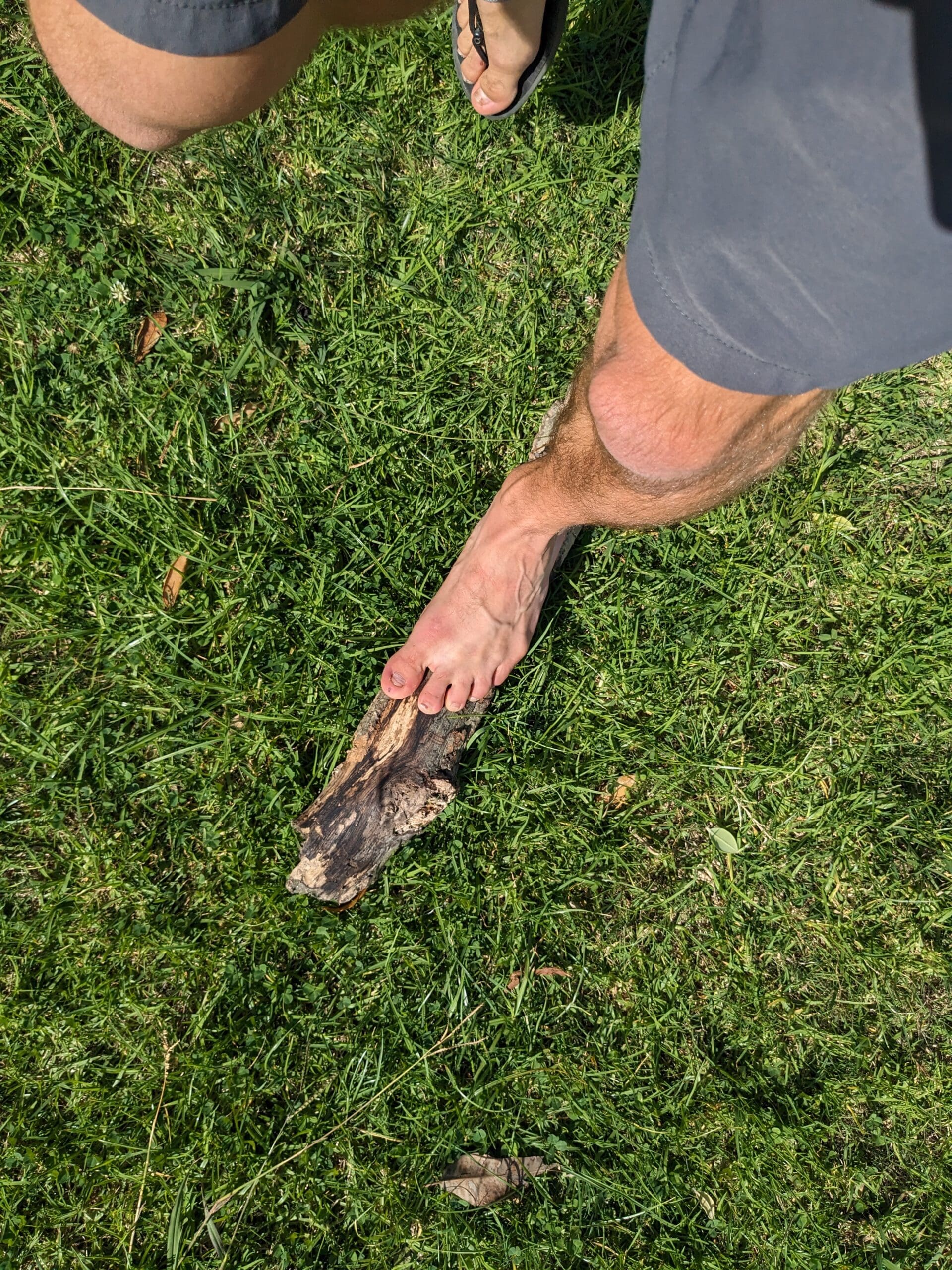
How the Big Toe Works
As I’ve already said, the big toe plays a key role in stabilizing and propelling us during an active gait cycle. And its role is greater than any other of the toes. Therefore, maintaining a strong and mobile big toe is very important.
But first, we need to know how the foot works.
The Windlass Mechanism

The Windlass Mechanism is a term used to describe the loading of the foot and the propulsion we gain from that loaded foot.
As we land, the fascia (foot tissues) tightens to create a strong base like an elastic band. This absorbs some energy and builds the base to support our body weight. That strong, stiff base becomes the platform to lever off during the push-off phase and even returns the energy just like an elastic band would! (energy return…..)
In addition to the fascia, the big toe stands out with its unique features. It houses two small bones that provide extra leverage for the push-off phase. Unlike the other toes, it has its own set of muscles and tendons. These distinct characteristics make the big toe a key player in our foot mechanics.
This is what makes the big toe so unique.
Conventional shoes tend to have a narrow toe box.
That’s where the front of the toe box tapers towards a point rather than being squared off, allowing room for the toes to splay.
Here, you can see a stark difference between a conventional shoe and a foot-shaped shoe.
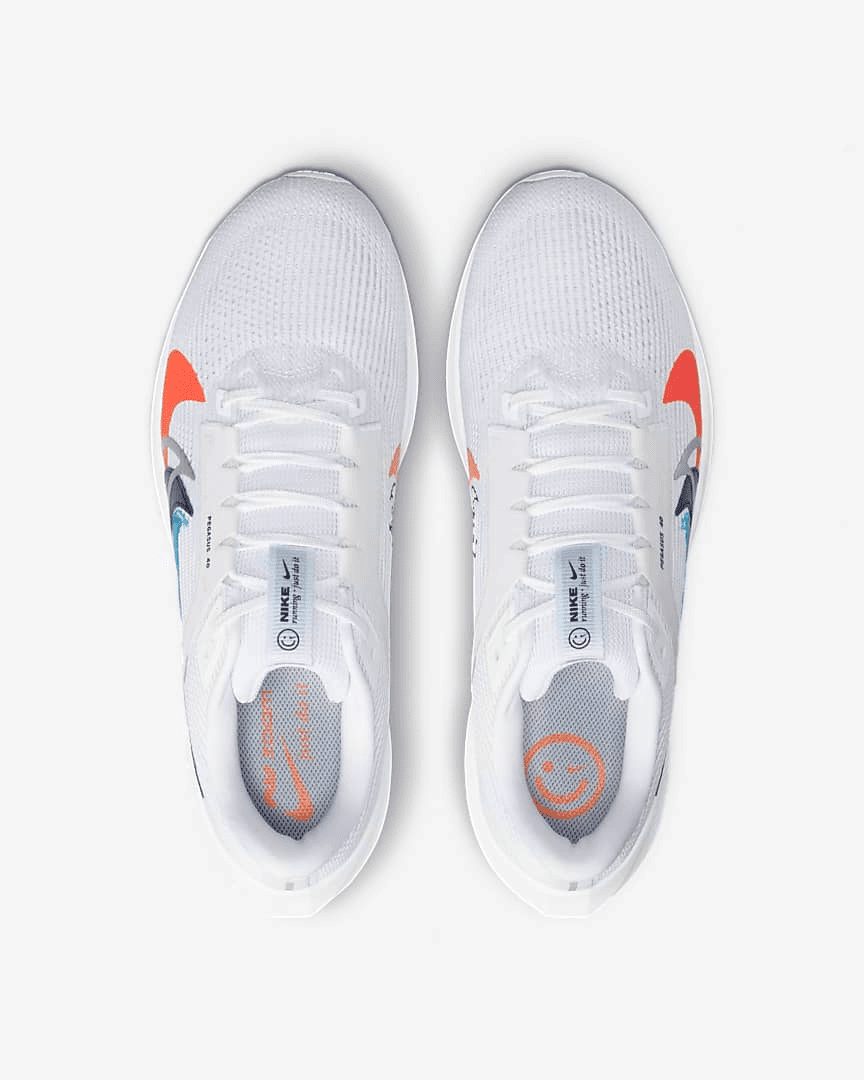
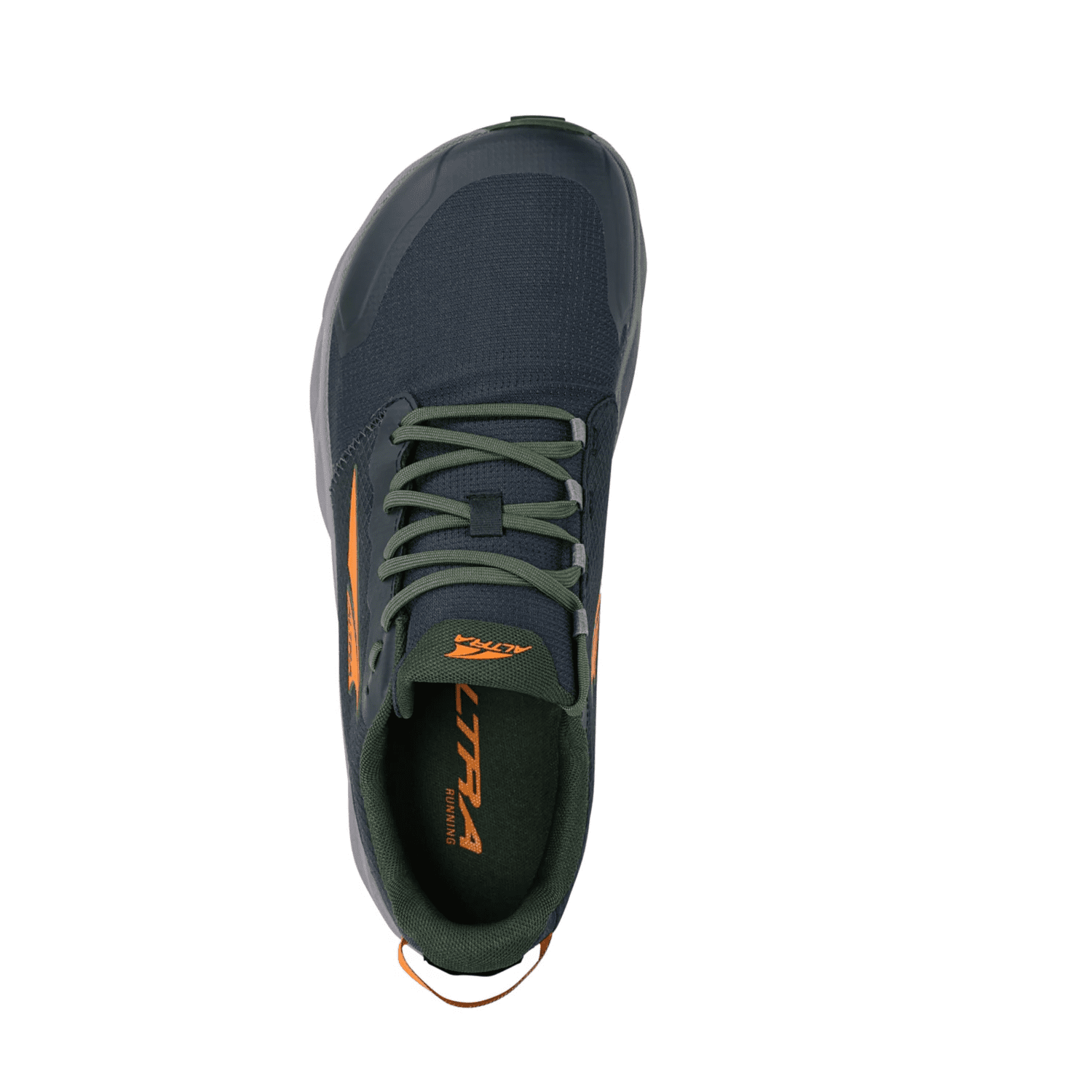
Unfortunately, the design of conventional shoes is a major culprit in compromising big toe function. These shoes force the big toe inward, pushing it out of its natural alignment. This misalignment hampers the toe’s ability to stabilize and propel, leading to a host of foot problems.
Simply speaking, the big toe can’t stabilize and propel if it is misaligned. Rather than the forces of the planted foot going straight through the big toe, the force will be loaded laterally, pushing the toe further inwards.
This displacement of the big toe starts to cause inflammation around the big toe joint and eventually causes permanent damage, otherwise known as bunions (Halx Valgus).

To recap, conventional shoes will
- Misalign the big toe
- Reduce stabilization and running power obtained from the big toe
- Cause permanent damage when overused (bunions)
Nobody wants those outcomes, no matter how “cool” they look.
If you don’t have bunions or hammer toes yet, rejoice! You can make a change now and avoid any permanent damage.
…. Improving bunions and foot damage; it’s just a longer journey. Don’t be disheartened, please!
Simply switch to foot-shaped shoes!
There aren’t many options on the market, but I suggest Altra shoes because they still make zero-drop cushioned shoes with a toe box wide enough for optimal big-toe splay.
Some would suggest that Altra’s are becoming too narrow, which may be true in some areas. But I still find models like the Escalante, Lone Peak, and Superior fine.
Remember to ease into Altra’s slowly because a drastic change in zero drop and foot-shaped shoes could cause injury.

How can foot-shaped shoes cause injuries if they’re supposed to fix long-term injuries?
It’s the conventional shoes’ fault again.
Because your feet have been squished into narrow shoes, and your heel has been lifted in conventional shoes, it has turned off (weakened) some of the musculature required for a “normal” gait. (big toe deactivation)
If you jump straight into foot-shaped shoes and start pounding the pavement in a weakened state, you’re ripe for injury.
To solve this, you have two options.
- Rotate into foot-shaped shoes slowly. Start at 15 minutes 2x a week, and increase 10% each week until you’re comfortable doing the full switch (roughly 16 weeks)
- Use PR Gear Bridge Soles in your new foot-shaped shoes to ease your feet into zero-drop shoes.
So now we get to the part where we improve our big toe activation.
And you’ll be happy to find out it’s super simple and requires very little change in your everyday life. We won’t add any typical exercises because there are simple switches that have proven to work just as well!
Let’s take it 1 step further than foot-shaped shoes.
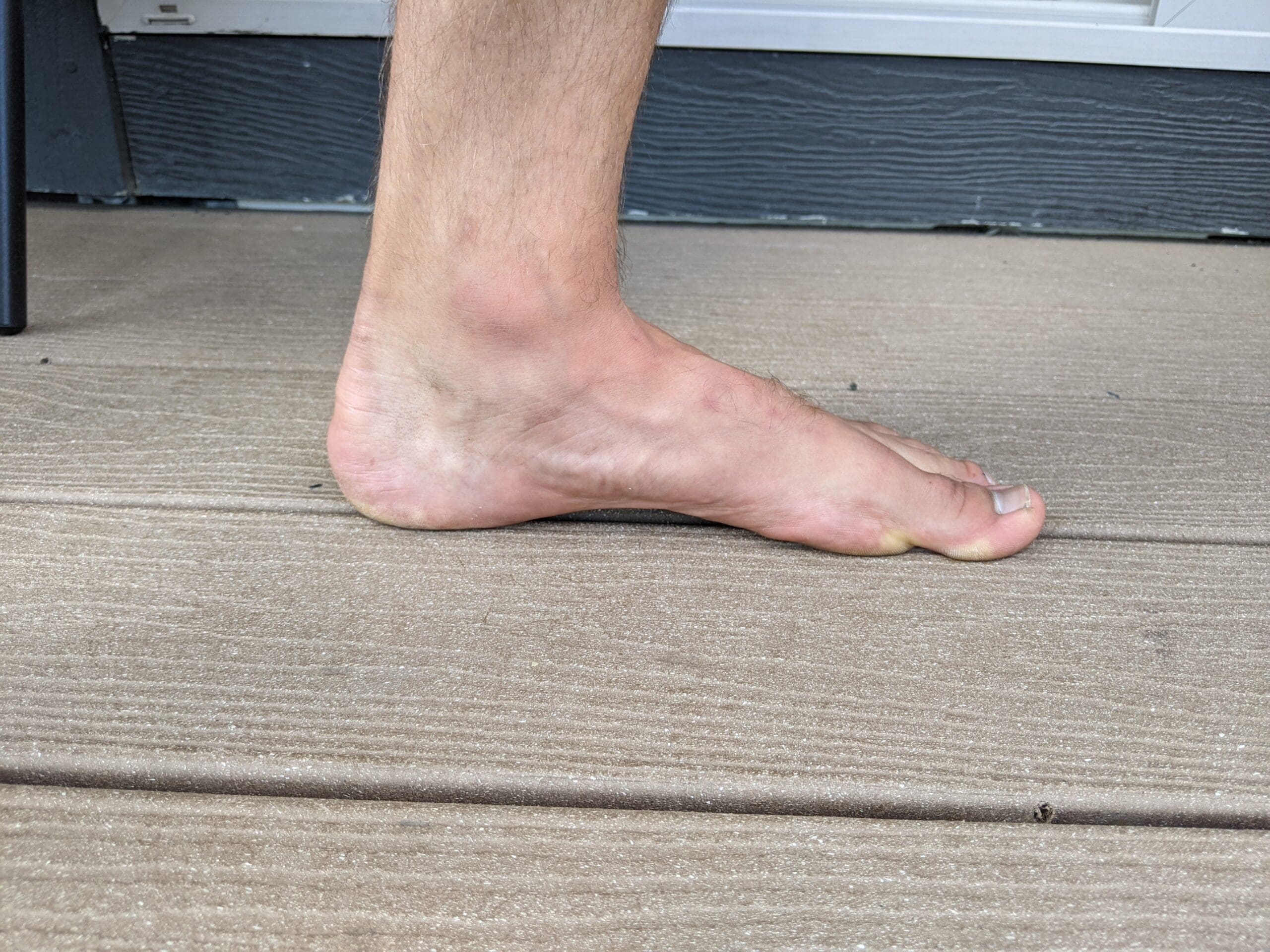
Go Barefoot
We already know that foot-shaped shoes allow the big toe to be positioned correctly, but going barefoot helps activate the big toe!
If you’re inside, take your shoes off! Feel the ground beneath your feet. Go outside barefoot now and then so your feet get used to different ground feedback.
If you’re unwilling to give up full protection, you can switch to minimal shoes.
I’ve got a bunch of reviews from Xero Shoes, Vivobarefoot, and Merrell, all with different features, price ranges, and, importantly, different fits. So, if you’re looking for a new shoe, check out one of the following blog posts.
Top 5 Shoes with Wide Toe Boxes – For all occasions
Top 5 Barefoot Road Running Shoes 2024
A Buyers Guide to Altra Trail Running Shoes 2024 – Personal Review
The Ultimate Guide to Choosing Altra Shoes for Different Terrains
So, does making the switch to barefoot really work?
It sure does if you do so slowly and methodically.
On top of that, another study showed that using minimal shoes for 6 months shows, on average, a 60% increase in foot strength!
That’s not to say barefoot exercises are for nothing. If you want to add some in, go for it! But for the simple path, just switch to natural footwear –or no footwear at all!
Use toe spacers
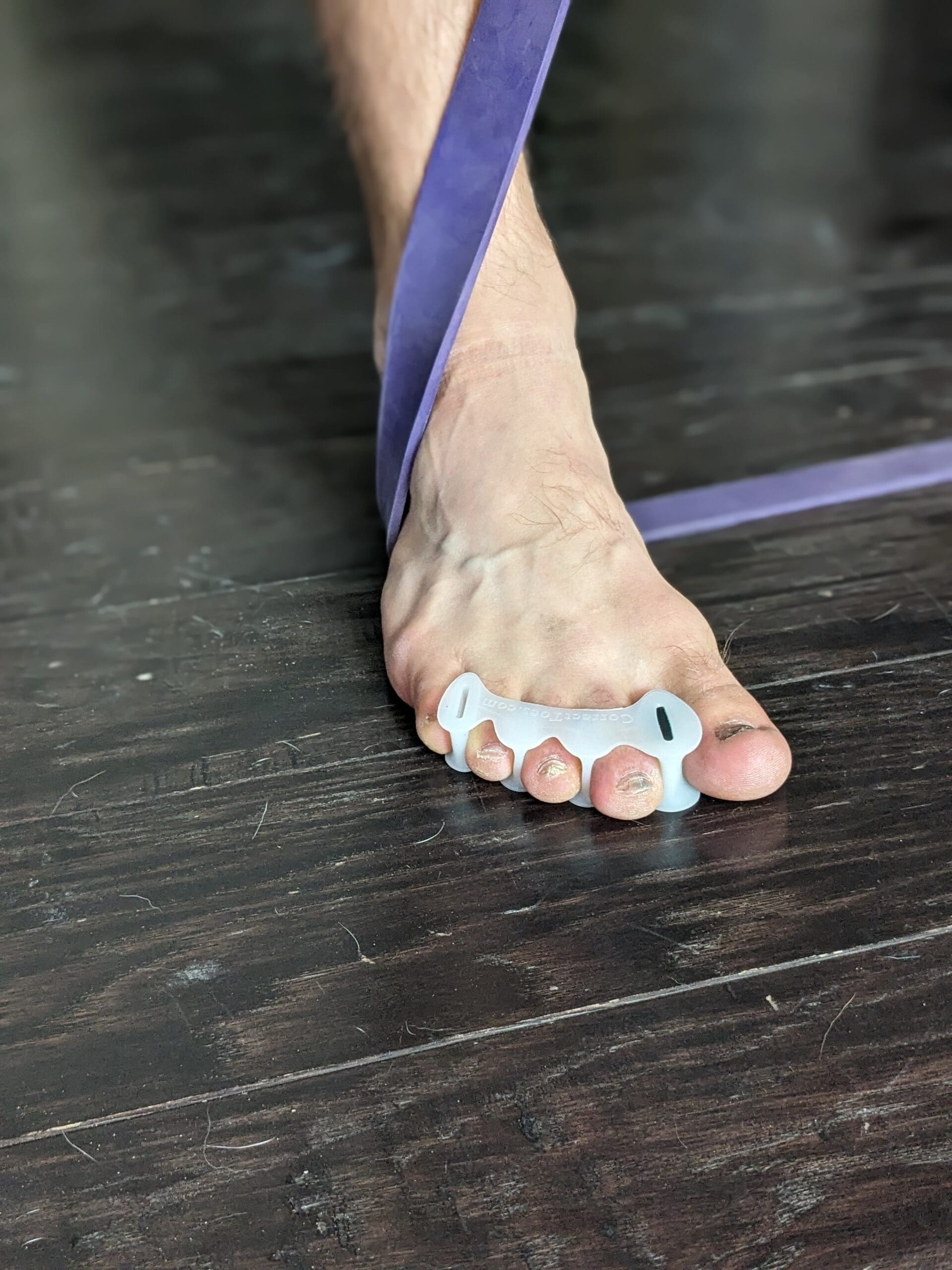
Because many of us have used conventional shoes for years, we need better mobilization to fix a misaligned big toe.
Using toe spacers can be a great way to realign the big toe and teach the body what an active big toe should feel like!
And remember, toe spacers aren’t to be used passively. You should wear them during a workout, walking, and even running.
As with any of these exercises, ease into them slowly to ensure you don’t cause injury due to overuse.
I use Correct Toes because they’re more rigid and force better alignment, but many others on the market can work, too!
I hope I’ve convinced you that the big toe is so important!
And by binding your big toe up in a little cage, you’re doing a disservice to your current foot performance and long-term foot health.
Making the simple switch to barefoot shoes can do wonders if you do so slowly and carefully, but your future self with thank you!
P.S. Foot-shaped shoes don’t have to be expensive! Older models work just as well! Here are some sales to get you started.
Altra Womens Sales
Altra Mens Sales
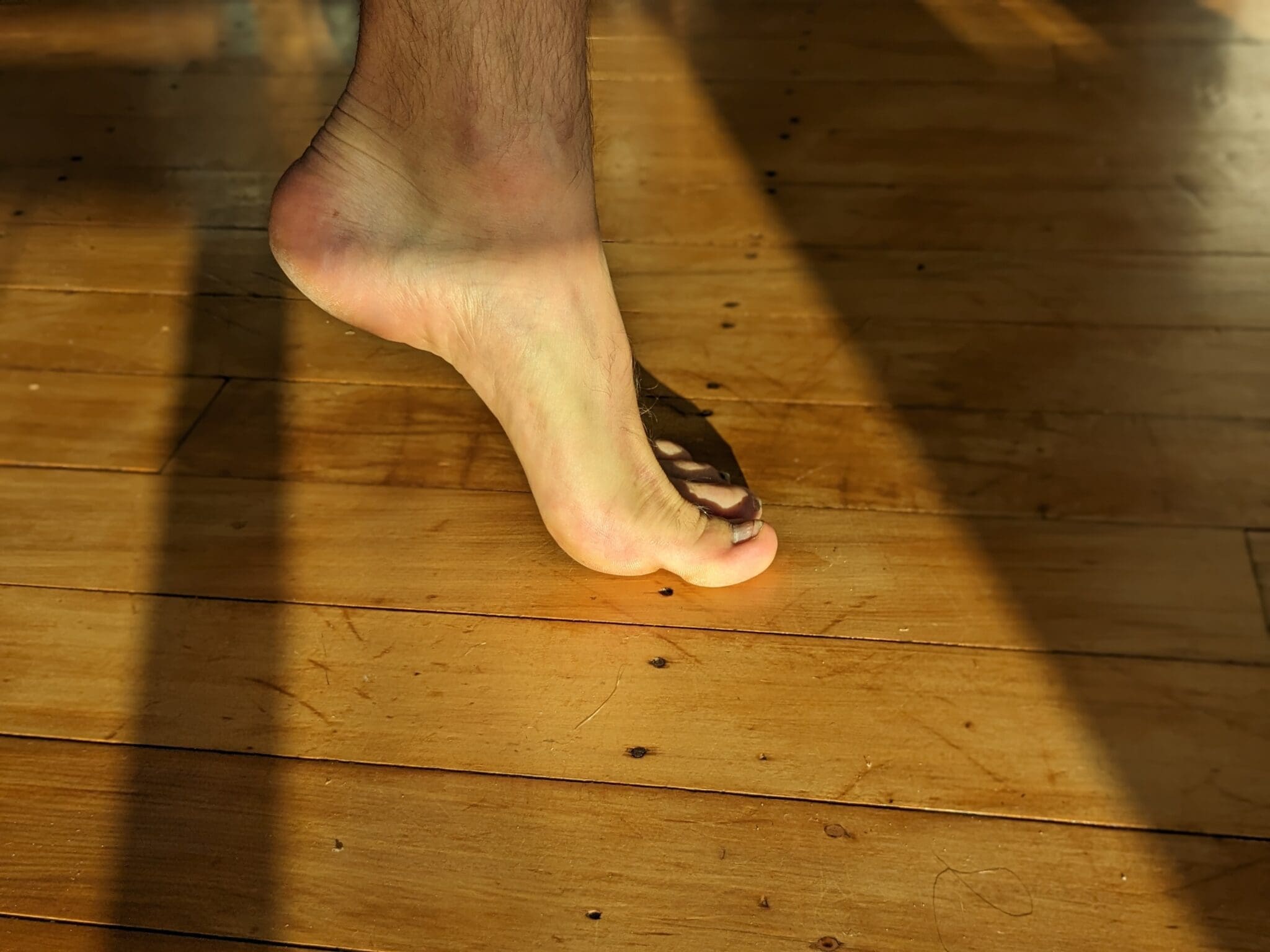

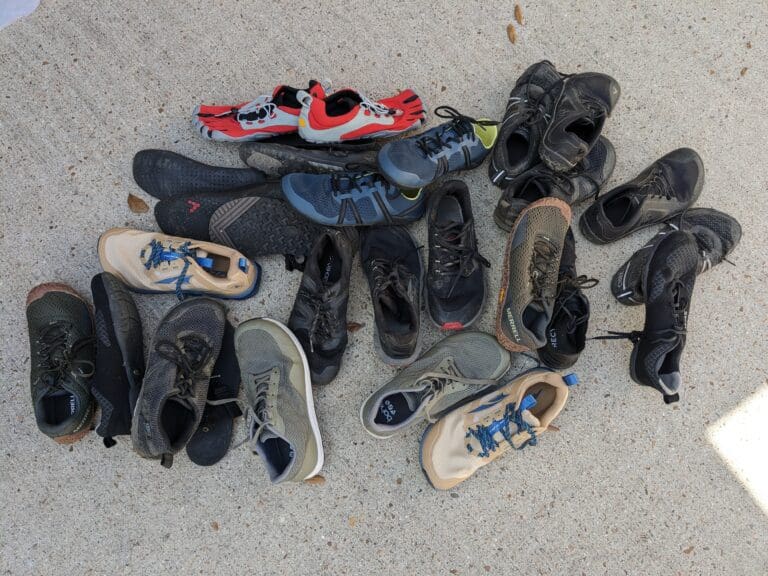
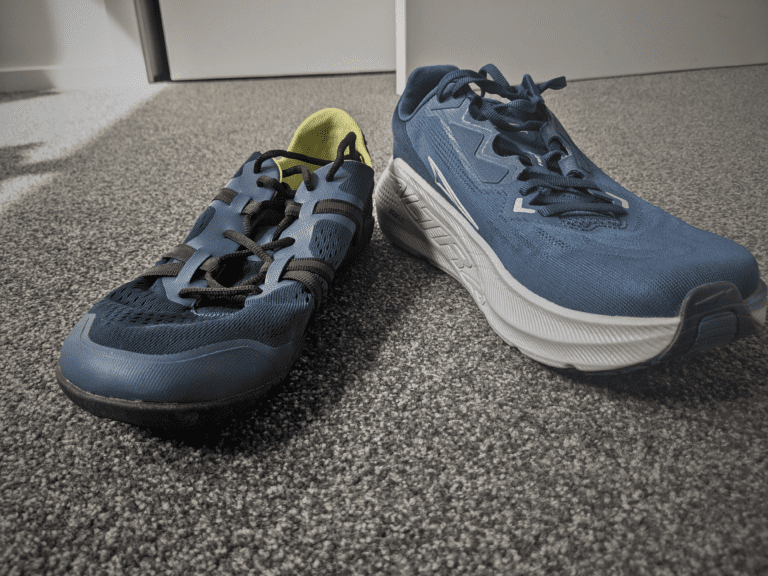
If those are your nails, you have a nice problem and need fungus treatment. Please, don’t show that without explain this at least and saying your evolution.
Yeah, I lost my big toe nail in a ultra race, and it’s been growing everywhere since. No fungus though.
But also, is it that noticeable with zooming all the way into the image?
I suppose Alf never did an ultra nor even a long, steep downhill 🙂
Keep up the good work Nick!
Best wishes Wolfgang